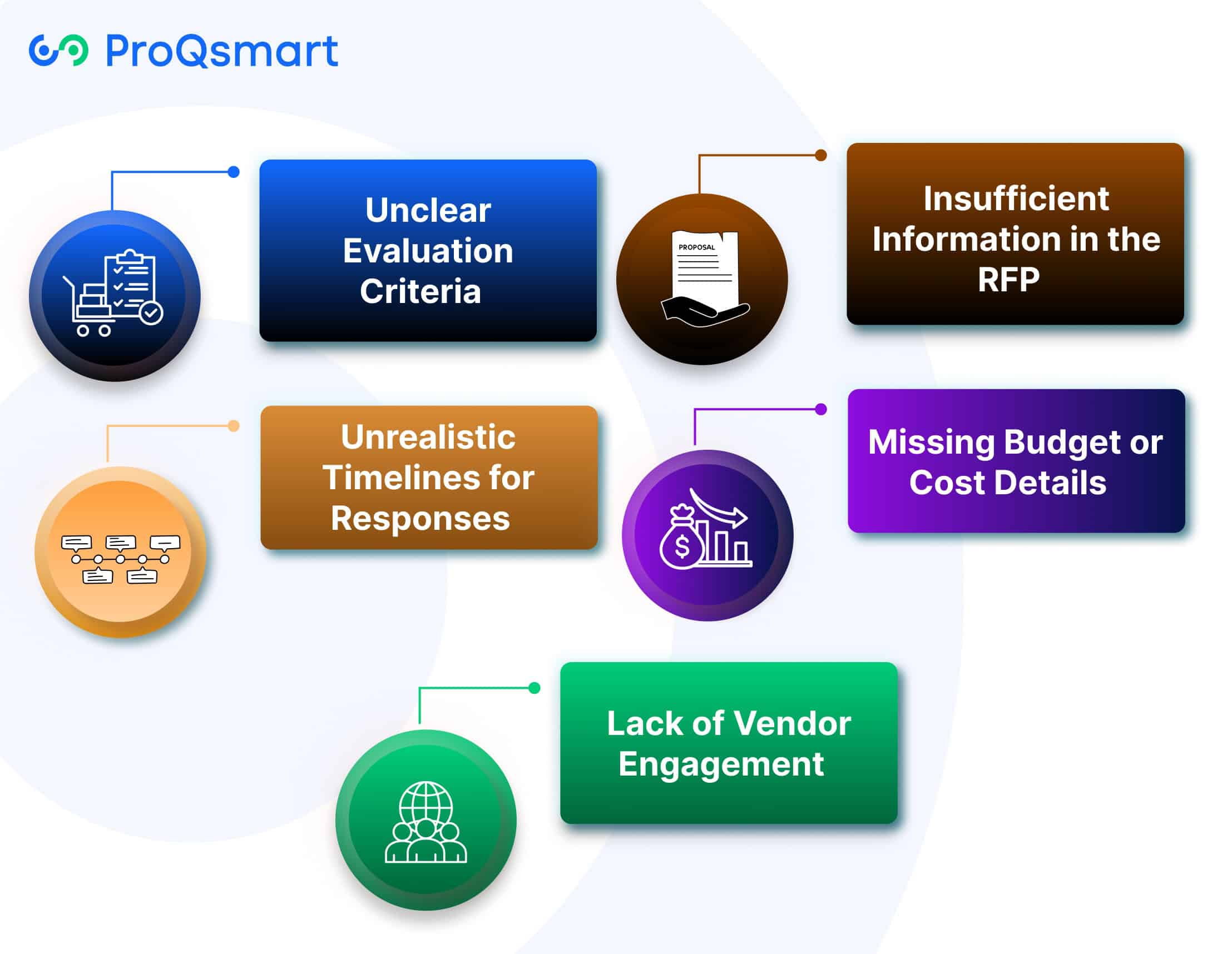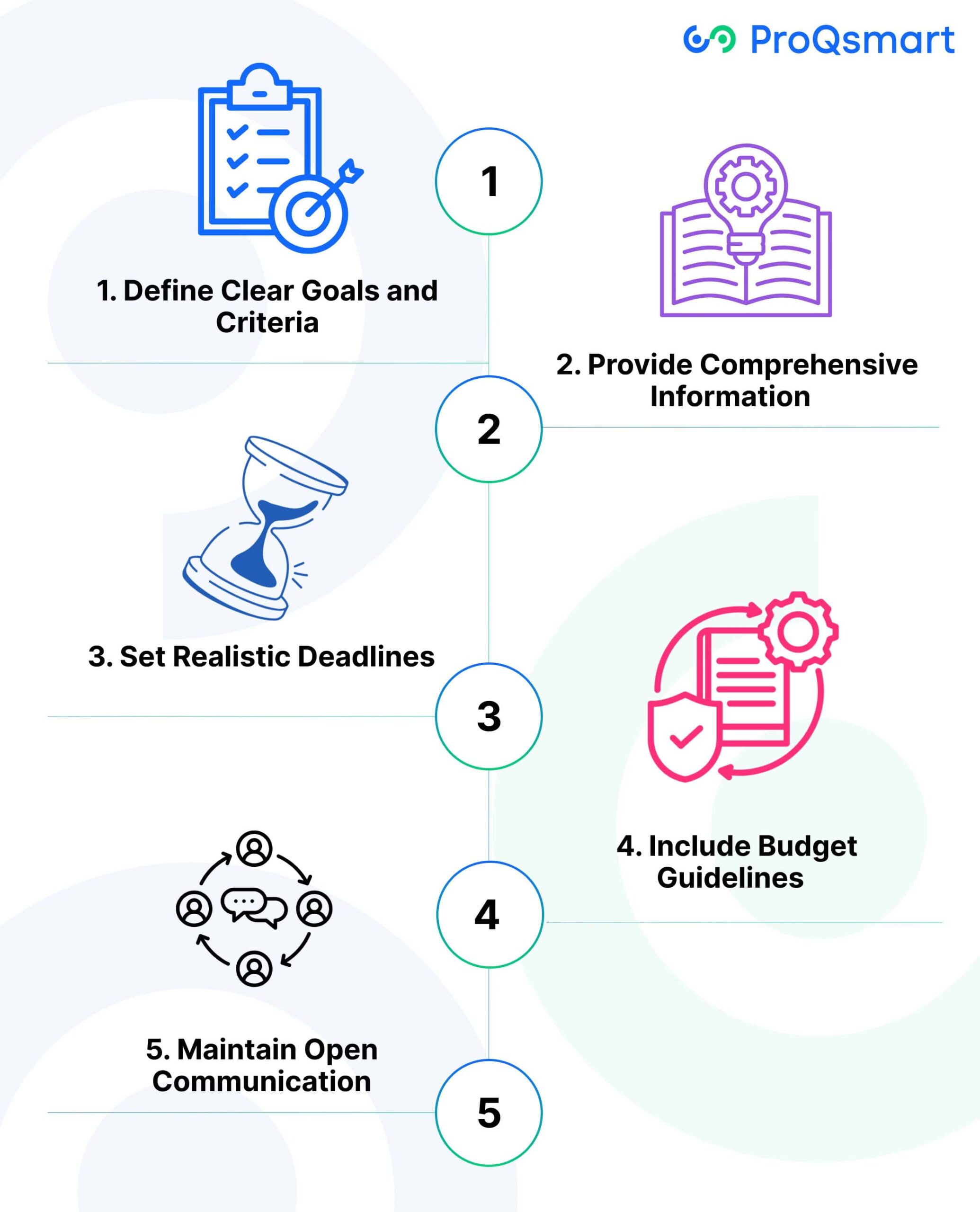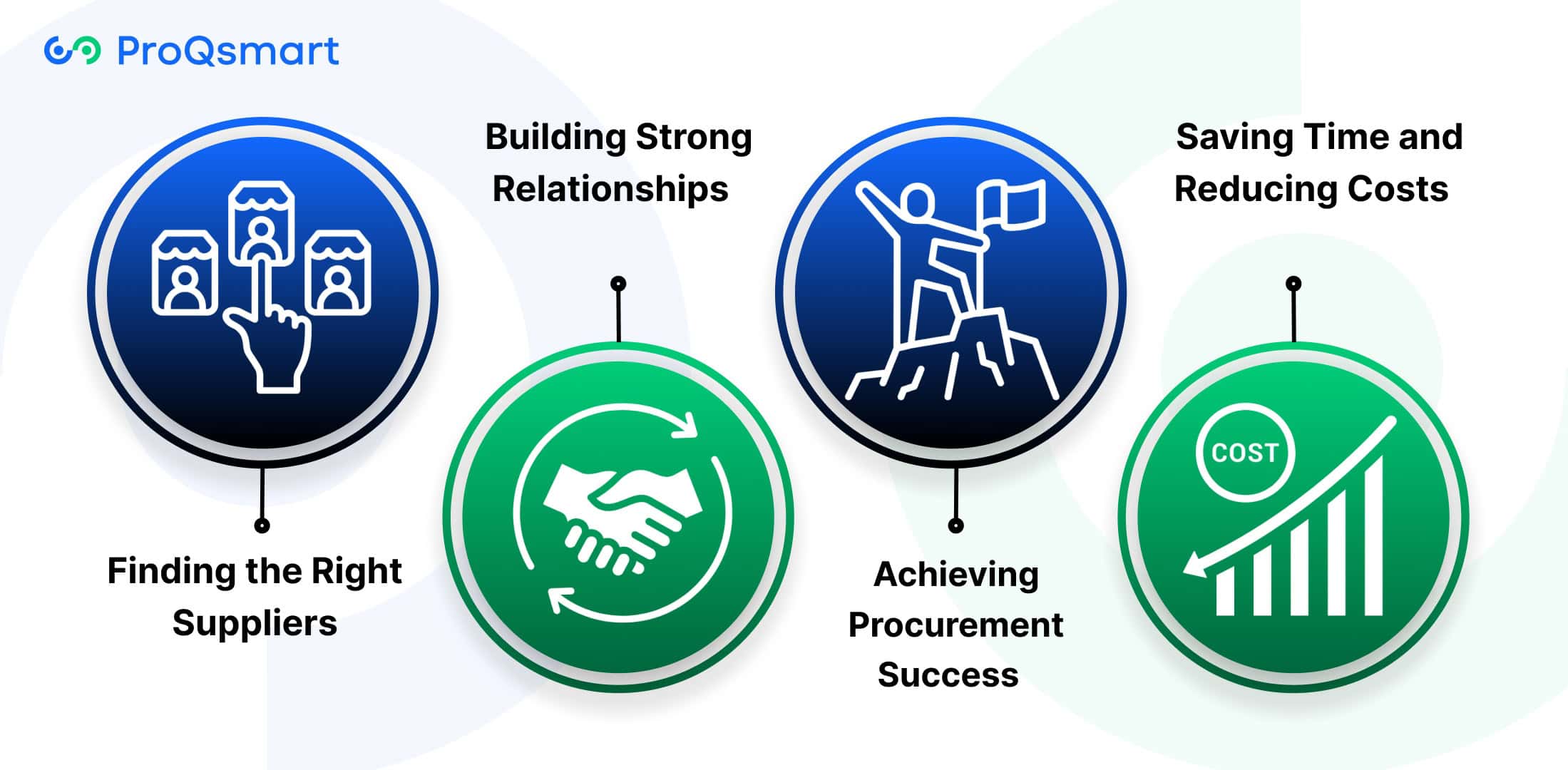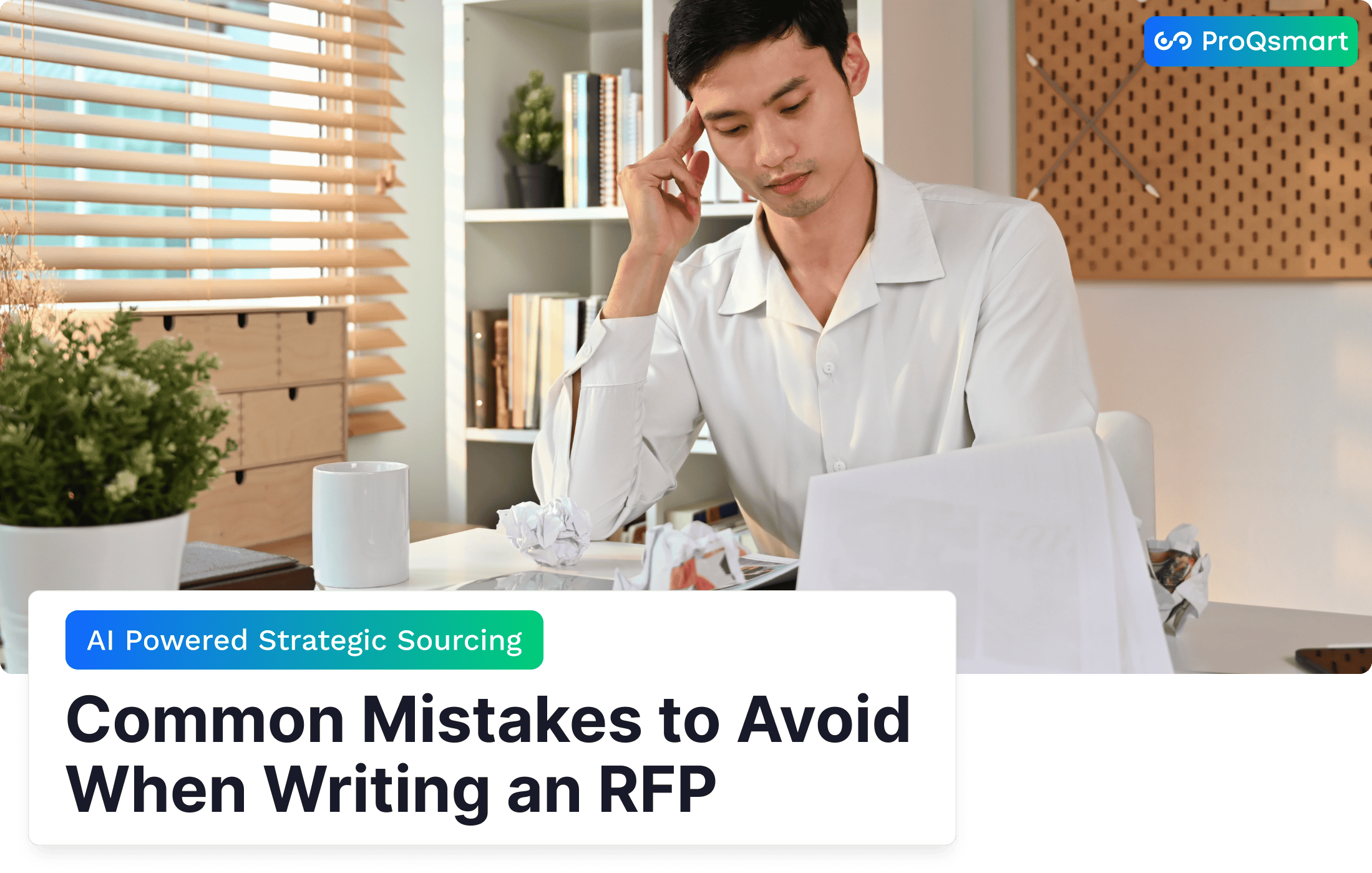A well-structured RFP can cut down the time spent on vendor selection by improving the process through transparency and matching organizational priorities with supplier strengths. In procurement, RFPs lead to competitive pricing and fuel innovative solutions. They can spur vendors to submit highly tailored proposals that meet unique needs.
Beyond being a powerful tool for inclusion, they protect against risk by establishing specific terms and conditions early on. For businesses aiming to optimize procurement processes and achieve strategic objectives. Mastering the RFP process is essential for informed decision-making and successful project outcomes.
What Is an RFP?
A public sector organization releases a Request for Proposal (RFP) as a formalized document. This RFP solicits suppliers or contractors to submit specific information regarding the products, services, or solutions they are able to provide. It serves a very important purpose in procurement.
It serves to clearly define the needs, deliverables, expectations, and evaluation process for a particular project or service. An RFP is an extremely useful tool, serving to solicit structured proposals designed to align with an organization’s unique needs. In comparison, an RFI collects initial information, and an RFQ focuses on cost information.
How the RFP Process Works
The RFP process first starts with understanding your organization’s needs and developing the scope of your project. This often requires extensive coordination between internal stakeholders to make sure all needs are met.
Now that the RFP is written, it will have the project details, evaluation criteria, timelines and submission instructions. After RFP issuance, suppliers then have a chance to review the RFP, and subsequently prepare and submit detailed proposals. These proposals usually focus on the technical solution, implementation schedule, pricing, and value-added offerings.
Each of those submissions is then ranked and scored against each other based on pre-determined criteria, creating a fair and transparent review. Multiple stakeholders including procurement teams and technical experts evaluate the proposals.
For construction projects, site visits or interviews sometimes become an important part of the evaluation process. These additional steps go a long way toward ensuring that the vendor can deliver effectively.
Ultimately, the vendor is awarded based on which proposal most closely aligns with the needs of the organization. This decision is not just cost-based; it includes other factors like quality, reliability, and long-term value.
With a clearly defined process in place, organizations reduce risks, protect their own accountability. Also establish relationships with vendors that lead to project success.
Common RFP Mistakes That Cannot be Overlooked

Developing a Request for Proposal (RFP) is a critical step in the procurement process. As even the tiniest mistakes can lead to significant headaches down the line. Understanding common RFP questions and missteps helps keep the entire RFP process streamlined . This significantly results in quality proposals that meet project requirements.
Unclear Evaluation Criteria
When evaluation criteria are vague, bidders often struggle to understand how their proposals will be assessed. This creates inconsistencies in responses, making it harder to compare bids effectively. Transparency is key in the evaluation process.
For instance, instead of stating “experience will be considered,” specify that “vendor must demonstrate three years of experience in industrial equipment supply.” Clear benchmarks help bidders align with your needs and allow for fairer assessments.
Insufficient Information in the RFP
A vague or incomplete RFP will only result in poor-quality submissions, as vendors don’t have the context they need to craft a thoughtful proposal. It’s critical that all the important things, such as project scope, technical specifications, and performance expectations, are included.
If you’re looking for construction materials, for instance, list your load requirements, your environmental concerns, and your need to comply with regulations. An effective checklist would list required timelines, deliverables, and any required certifications. Also other relevant items to help focus and make responses more complete.
Unrealistic Timelines for Responses
Unreasonable short deadlines either dissuade participation or lead to last-minute, unthoughtful submissions. Vendors require sufficient time to collect information, put teams together, and develop complete and competitive responses.
To determine reasonable timelines, take into account the level of complexity involved with the project and involve vendors during the planning process.
Missing Budget or Cost Details
Leaving budget information out of an RFP typically results in proposals that will be above the budget constraints or below quality requirements. Sharing a budget range—i.e., $50,000-$75,000—helps vendors know what they’re working with. And this enables them to present solutions they can realistically deliver.
Being upfront regarding fiscal expectations creates an environment of trust and reduces the risk of time and energy being wasted on both ends.
Lack of Vendor Engagement
Not allowing enough communication with vendors throughout the RFP process could lead to misaligned proposals or missing out entirely on vendors who would be valuable partners. Strategies such as having a pre-bid meeting or providing Q&A sessions encourage participation and help clarify expectations.
Establishing a feedback loop once the RFP has closed not only aids vendors in honing their future submissions, it builds better relationships and trust.
How to Avoid RFP Mistakes

Request for Proposals (RFPs) are the lifeblood of procurement. Think of them as the gateway between your organization and the vendor community. When done correctly, the RFP process can lead to productive partnerships and drive valuable business outcomes.
Simple, avoidable mistakes can derail these beneficial results. By approaching these matters with foresight you can save time, create a level playing field for competition, and receive the best possible responses from vendors you are seeking.
1. Define Clear Goals and Criteria
Establishing specific objectives for your RFP helps keep you focused on what matters most to your organization. If you’re looking to decrease supply chain costs by 10%, let this objective inform your every move. It should guide each part of the process.
Measurable, objective comparisons clearly defined evaluation criteria—including technical expertise, cost-effectiveness, or sustainability—allow for clear and fair measurement. A more sensible process would be to bring stakeholders in early to help define priorities and then use a weighted scoring system to prioritize proposals accordingly.
2. Provide Comprehensive Information
Vendors need specificity to be able to create competitive, accurate proposals. Be specific about requirements, scope of the project, deadlines, and how you’ll evaluate proposals. A checklist can prevent omissions: project objectives, constraints, legal requirements, and evaluation methodology.
Comprehensive RFPs minimize miscommunication and align vendor capabilities with project needs. Consider this—ProQsmart makes e-tenders easier by consolidating documents and automating workflows, so every important detail gets addressed without any hiccups.
3. Set Realistic Deadlines
An achievable timeline sets a reasonable balance between urgency and quality. Provide a realistic timeframe for vendors to respond thoroughly, including time for their own internal review processes. A strong timeline may allow three weeks for proposals to be prepared, with a week for your review after proposals are due.
Don’t impose tight deadlines, which will either discourage a number of qualified vendors from participating or lead to rushed, lower-quality proposals.
4. Include Budget Guidelines
When a clear budget is provided, vendors can better tailor their proposals to meet your needs. Being transparent about your financial constraints stops poor and unrealistic bids at the pass.
Providing an estimated budget range—for instance, between $100,000 and $120,000—helps vendors focus on proposing solutions that provide the most value for the specified budget.
5. Maintain Open Communication
Open lines of communication create a level of trust. Set up one RFP contact person for all vendor questions, and respond quickly.
ProQsmart’s secure collaboration tools allow teams to work together in real-time, keeping everyone on the same page and preventing costly misinterpretations.
Benefits of a Well-Crafted RFP

A well-crafted Request for Proposal (RFP) is the bedrock of a good procurement process. By using effective RFP templates, agencies ensure a consistent and fair process for evaluating suppliers, establishing valuable long-term partnerships, and maximizing time and resources. This creates transparency, reduces risk, and leads to healthier procurement outcomes by aligning project requirements with what the supplier community can provide.
"Don't let the complexities of RFP drafting slow you down. Download our ready-to-use RFP template and take the first step towards efficient vendor selection and project success"
Finding the Right Suppliers
A well-structured RFP process is key to pinpointing suppliers that best match your project needs. By detailing technical specifications, timelines, and budget constraints, it narrows down potential vendors to those with the necessary expertise and resources. If a construction firm needs sustainable materials, they can craft questions that force suppliers to respond with the necessary eco-friendly certifications.
Careful evaluations, rooted in clearly defined criteria, allow organizations to determine capabilities and past reliability, minimizing the risk of choosing an unqualified vendor.
Building Strong Relationships
Well-crafted RFPs help create successful relationships with vendors, establishing expectations and requirements from the beginning. Open lines of communication build mutual respect and demonstrate that vendors are in tune with project objectives and limitations.
For example, organizations that employ comprehensive RFPs tend to find the relationship between themselves and the selected firm runs more smoothly. Strategies such as regular reviews of performance and open lines of communication foster relationships that lead to partnerships that get the job done, every time.
Mutual understanding is critical. Suppliers that understand your goals are better equipped to produce top-quality results.
Achieving Procurement Success
On a direct level, a strategically crafted RFP will greatly improve the success of a procurement process. Well-written proposal responses offer clear insight, allowing municipalities and agencies to focus on making the best decision. Companies like AutoRFP.ai demonstrate how automated RFP tools improve response quality, with 80% reporting enhanced outcomes.
ProQsmart is a comprehensive, intelligent, AI-driven platform that increases procurement success. It provides ongoing workflow management, compliance maintenance, and supplier performance tracking to drive a real impact.
Saving Time and Reducing Costs
Even more important, well-crafted RFPs save time by cutting down on unnecessary back-and-forth and expensive missteps. Well defined requirements minimize risks and lead to more competitive proposals, saving project time and taxpayer money.
Automated tools like ProQsmart help simplify the bidding process, track budgets and documents, increasing efficiency and cost savings. By reducing time lost to delays, agencies make the most of every dollar and deliver projects more quickly.
Tools and Resources for Better RFPs
A thoughtfully planned out RFP process goes a long way toward making procurement more efficient and effective. By utilizing effective RFP templates and well-chosen tools, businesses can streamline workflows, improve collaboration, and help maintain compliance, ultimately saving time and achieving better results in their bidding process.
Using E-Sourcing Technology
E-sourcing platforms revolutionize the RFP process
by centralizing vendor communications, document sharing, and proposal evaluations. These technology tools automate low-value tasks, freeing up procurement teams to spend their time on more strategic work than repetitive administrative tasks.
Digital platforms enable vendors to submit proposals directly, eliminating the inefficiencies of email exchanges or shared documents, which often hinder group collaboration. These platforms offer a trusted environment for data handling and sharing that maintains transparency and accountability of sensitive data.
For instance, ProQsmart’s e-tendering feature makes it easy for bidders to submit bids, while streamlining and automating workflows. The collaborative real-time environment of the platform’s supplier management tools helps you develop better vendor relationships.
By providing AI-powered insights, ProQsmart enables businesses to make decisions that align with their budget, improving efficiency by up to 40%.
Advantages of Procurement Software
Procurement software today provides extensive automation, knowledge libraries, and dashboards to help you manage the process. Automation reduces manual errors and accelerates workflows, while a robust knowledge library helps teams reuse pre-approved content, saving hours in RFP response preparation.
Tools such as ProQsmart have become quite famous for these capabilities, allowing companies to accomplish the same work as a full-time assistant. According to recent research, nearly one-third of businesses have seen more than 100% ROI in less than a year of implementing automation.
ProQsmart shines with its robust implementation of budget tracking, subcontractor management, and supplier performance monitoring. This unique holistic approach creates the most tremendous value throughout each phase of the proposal process.
Streamlining Proposal Evaluation
A clear, structured evaluation process helps to prevent bias. Scoring systems simplify comparing proposals, while collaboration tools like ProQsmart enable real-time team input.
Dashboards provide transparency and at-a-glance information, shortening the time to make a decision and increasing decision-making precision.
Automating Vendor Communication
Automating vendor interactions through an RFP platform minimizes the risk of human error, saves time, and builds trust. Tools such as ProQsmart streamline the entire RFP process by removing unnecessary administrative burdens like pre-qualifications and updating contracts, ensuring everyone is aligned.
Importance of Supplier Selection
Choosing the right supplier can be the foundation on which great project success is built. Since suppliers are the ones that will directly impact the quality, cost, and timeliness of deliverables, the selection of suppliers is perhaps the most critical step in procurement.
By strategically selecting suppliers, companies can realize substantial cost savings, mitigate disruptions to their operations, and focus resources on what matters most to the project. A strong supplier selection process cultivates reliability and creates the groundwork for long-term success.
Connecting Criteria to Business Goals
Aligning evaluation criteria with business priorities to make sure procurement decisions are on that scorecard and driving the organization to meet their goals. Strategic sourcing means you have to weigh technical expertise, price, and delivery timelines.
These key elements line up with big-picture goals of cost-efficiency and operational excellence. A sensible approach would assign price 30% of the weight. It weights 40% for technical expertise and 30% for delivery time, so quality is funded while still requiring affordable bids.
Conducting Preliminary Reviews
Preliminary reviews of vendor proposals act as a filter to identify the most promising candidates early in the process. By analyzing details such as financial stability and adherence to RFP requirements, procurement teams can avoid disruptions and focus on suppliers that meet critical standards.
Initial assessments inform final evaluations by highlighting areas requiring clarification or improvement. For example, feedback loops during this stage refine proposals, ensuring submissions align more closely with project needs.
Collaborating for Better Proposals
Working together between all the stakeholders involved promotes better teamwork, leads to better decision making, and ultimately creates a better proposal. Including cross-functional teams from the start facilitates a variety of perspectives, fueling innovation and uncovering potential risks early on.
Tools such as ProQsmart allow for easy, real-time collaboration, making document management easier and improving communication with potential suppliers. This participatory process fosters collaboration and consensus among stakeholders, yielding proposals that best meet both technical requirements and strategic priorities.
Ensuring Long-Term Partnerships
Creating sustainable supplier relationships will involve regular communication, feedback, and monitoring of supplier performance. Ongoing practices such as reviewing delivery metrics and maintaining technical expertise help hold vendors accountable and deliver high-quality productions every time.
ProQsmart’s supplier performance monitoring further supports these initiatives by offering data-driven insights, allowing businesses to develop strong, mutually beneficial partnerships.
Conclusion
A clear and well-defined RFP process establishes a solid foundation for any project, fostering healthy and positive supplier relationships. Setting the right parameters from the outset saves valuable time and resources while cultivating goodwill with vendors. By addressing common challenges and leveraging the appropriate tools, such as effective RFP templates, you can ensure that your strategic goals are not compromised by day-to-day operational issues. A well-constructed RFP enables a thorough, objective comparison of potential suppliers, empowering your team to make confident, informed decisions.
For organizations committed to elevating their RFP process and achieving meaningful procurement outcomes, now is the time to take action. By implementing the strategies outlined, including utilizing sample RFP questions, you can significantly enhance your procurement process and drive substantial improvements.
To further optimize your approach and realize the full potential of your RFPs, explore ProQsmart’s innovative solutions. Book a demo today to discover how ProQsmart can transform your RFP process into a streamlined, efficient operation that drives tangible, long-term success and stronger supplier relationships






